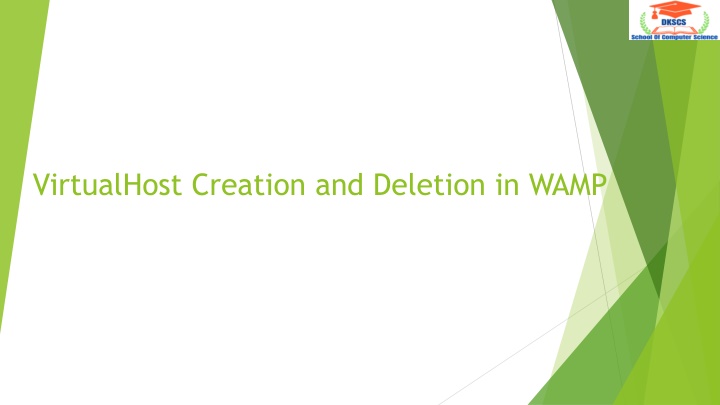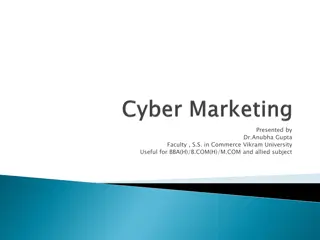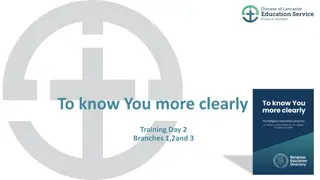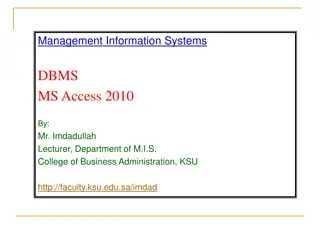
Importance of VirtualHosts for Local Development with WAMP
Learn about the significance of VirtualHosts in local development using WAMP, including managing multiple projects on a single server, setting custom domain names, creating isolated environments, and simplifying URL structures for a cleaner and more professional look.
Download Presentation

Please find below an Image/Link to download the presentation.
The content on the website is provided AS IS for your information and personal use only. It may not be sold, licensed, or shared on other websites without obtaining consent from the author. If you encounter any issues during the download, it is possible that the publisher has removed the file from their server.
You are allowed to download the files provided on this website for personal or commercial use, subject to the condition that they are used lawfully. All files are the property of their respective owners.
The content on the website is provided AS IS for your information and personal use only. It may not be sold, licensed, or shared on other websites without obtaining consent from the author.
E N D
Presentation Transcript
Introduction WAMP Overview Acronym: Windows, Apache, MySQL, PHP Local development environment for web applications Easy installation and configuration on Windows Windows Host operating system for WAMP Familiar environment for developers Apache Web server component Handles HTTP requests Serves web content to clients
MySQL Relational Database Management System (RDBMS) Stores and manages application data Supports SQL queries PHP Server-side scripting language Generates dynamic web content Interacts with MySQL databases Why Use WAMP? Ideal for PHP web development Local testing before deployment Comprehensive and user-friendly setup
Importance of VirtualHosts in local development Multiple Projects, One Server Allows hosting multiple projects on a single Apache server Each project can have its own domain name (e.g., dkscsproject1.local , dkscsproject2.local ) Custom Domain Names Simulates production environment by using custom domain names Easier to manage and remember than localhost with port numbers Isolated Environments Each VirtualHost operates independently Enables different configurations and settings for each project
Simplified URL Structure Cleaner and more professional-looking URLs (e.g., http://myproject.local ) Removes the need for subdirectories or port numbers in URLs Mimics Production Environment Closely replicates the structure of live servers Helps in testing and debugging in an environment similar to production Access Control Control access to different projects by configuring VirtualHost permissions Useful for restricting access to specific projects during development
What is a VirtualHost? What is VirtualHost? A method to host multiple websites/domains on a single server. Efficiently manage resources and configurations. Use Cases: Multiple sites on a single server Custom domain names for local development
Creating a VirtualHost - Step 1 Run the wamp server Make sure that wamp icon turns to green. Double click on Wamp icon. Click on Your virtualHosts. After that click on VirtualHost management You will able to see this window
Creating a VirtualHost - Step 2 Give virtualHost name (i.e local.dkscsproject.com) Copy public path location(i.e, C:\wamp64\www\gitlab\training) and paste here Click on here After that You will able to see this window
Creating a VirtualHost - Step 3 Right click the wamp icon Select Tools and click on Restart DNS
How to run virtual host Type given URL (i.e, local.dkscsproject.com) in browser. You will see this window You will able to see all the saved programs in your local folder. Click on URL your code will run on virtual host.
Deleting VirtualHost Open virtualHost management Click on Delete VirtualHost form
Select your serverName which you want to delete. Then click on Delete VirtualHost .






















